Detroit lost another centreman when Joakim Andersson broke his foot in Sunday's loss to the Rangers, so Emmerton has been recalled to centre the fourth line while Andersson sits for the next 2-3 weeks. Emmerton has two assists in 11 games with the Red Wings this season. While with the Griffins, he has totaled 14 goals and 21 assists (35 points) in 43 games.
NHL Hockey Player News
Nilstorp, 30, has been recalled because Kari Lehtonen is likely unavailable for Monday's game so Nilstorp will serve as Tim Thomas' backup. Nilstorp has posted a 21-12-4 record for Texas this season with a 2.58 GAA and a .915 SV%. His 21 wins are currently tied for the third-most in the AHL. He made his NHL debut in 2012-13 appearing in five game for Dallas, registering a 1-3-1 record with a .897 save percentage and a 3.09 goals against average.
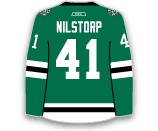
Miele is undersized at 5-foot-8, 175 lbs. but has been great with Portland this season. Miele has recorded 23 goals and 35 assists (58 points) in 56 games.

Brown played 12:16 with one shot on goal in his Capitals debut on Thursday, but did not dress on Saturday.

Wellman was recalled and expected to play on Saturday, however he did not dress and has been returned to the Hershey Bears.
McLaren will likely draw into the Maple Leafs lineup tonight with David Clarkson questionable to play due to a leg injury.
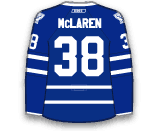
Lander has registered 17 goals and 28 assists (45 points) in 42 games with the Barons this season.
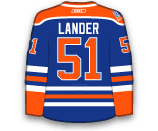
Jensen was a first-round pick (29th overall) in the 2011 NHL draft. He appeared in two games with the Canucks last season, his only two NHL games of his career. He has registered 15 goals and five assists (20 points) in 51 games with Utica (AHL) this season. He will skate on the top-line with Ryan Kesler and Chris Higgins.

Mrazek has been recalled to back-up Jimmy Howard on Sunday because Jonas Gustavsson has a sore groin. Mrazek has gone 1-3-0 with a 1.64 GAA and .924 SV% with the Red Wings this season.
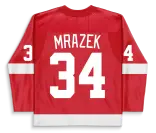
Klefbom was selected in the first-round (19th overall) in 2011. Klefbom will likely get a chance to make his NHL debut in the next few games, he has one goal and eight assists in 45 games with the Barons this season. The Oilers organization is extremely excited about Klefbom's future.

Wellman will be in Washington by game-time and is expected to play tonight. Expect Wellman to centre the Capitals second line with Dustin Penner and Troy Brouwer on his wings. Wellman has two goals and one assist in 10 games with the Capitals this season.
St. Denis has not played in the NHL since 2011-12 when he was with the Canadiens. He has nine goals and 15 assists (24 points) in 51 games with Springfield this season.

The Red Wings recalled Pulkkinen on Thursday as insurance for Daniel Alfredsson, who had teeth knocked out on Tuesday. Pulkkinen did not dress and will now head back to Grand Rapids.
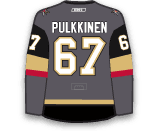
Schilling play 17:45 and was a minus-2 in Thursday's loss to the Bruins. Schilling is getting sent back because Dmitry Orlov has finished serving his two-game suspension and will return Saturday.
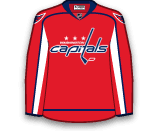
Deslauriers was acquired by the Sabres on Wednesday and could make his NHL debut tonight in Florida. Deslauriers has been recalled because Chris Stewart and Zemgus Girgensons were injured on Thursday and are unavailable for Friday's game. He had 18 goals and 21 assists (39 points) in 60 games with Manchester (AHL) before the trade.

Adam has been recalled because Chris Stewart and Zemgus Girgensons were injured on Thursday. Adam has one goal in nine games with the Sabres this season. While in Rochester he has 24 goals, 18 assists (42 points) and a plus-12 rating in 42 games. No word on if he will be in the lineup tonight.

Pulkkinen was selected in the fourth-round (111th overall) in 2010. He is in his first full season with Grand Rapids after playing with Jokerit Helsinki of the SM-liiga from 2008-13. In 58 games this season Pulkkinen has recorded 24 goals and 25 assists (49 points) in 58 games. As of right now it would seem he is doubtful to make his NHL debut tonight, but with the youth movement going on in Detroit because of injuries, don't be surprised to see him in the boxscore soon.

Schilling will slide into the lineup vs. the Bruins with John Erskine sidelined with an undisclosed injury. Schilling has just one NHL game under his belt, tonight will be his first of this season. He has three goals and nine assists (12 points) in 51 games with Hershey.

Albert is having a strong season with a the IceCaps (AHL) and has recently been red-hot. He has totalled 17 goals and 16 assists (33 points) in 51 games with St. John's. In eight games with the Jets this season he has one goal. He has been recalled to fill the void at centre left by the Mark Scheifele.

Moser recorded his first NHL point on Feb 8 and first NHL goal on Saturday, however the two points in six games was not enough to keep him in the NHL. Moser returns to the AHL where he has eight goals and 17 assists (25 points) in 42 games.